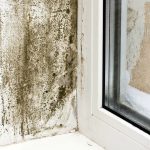The following case study reflects decisions made by the Consumer, Trader and Tenancy Tribunal, which is now the NSW Consumer and Commercial Division of NCAT from 1 January 2014. The information provided below is direct from the NSW Civil and Administrative Tribunal records.
The Residential Tenancies Act 2010 clearly sets out the rights and responsibilities of both tenant and landlord regarding repairs and maintenance. Section 52 provides that a landlord has an obligation to provide the residential premises in a reasonable state of cleanliness and fit habitation by the tenant.
A man rented an apartment through a real estate agency for 13 months. Shortly after ending his tenancy, the former tenant lodged an application to the Tribunal claiming a substantial rent reduction, compensation for damaged items, moving and cleaning costs. He also sought compensation for stress, disappointment and breach of privacy. The claim related to mould in the apartment.
At the Tribunal hearing, the former tenant gave evidence that as soon as he had moved into the apartment the smell of mould was overwhelming. He said that the problem continued throughout the tenancy and he found it extremely frustrating. Despite constant cleaning, damp and mould treatments, and the purchase of a dehumidifier, the mould began to affect his health and it damaged his clothing and other belongings.
The former tenant said that he regularly complained to the real estate agency about the damp and mould, but that they “kept passing off the issue” to the strata managers as a common property problem. He said that nothing was done to resolve the issue.
The real estate agent did not dispute the claim about the mould, nor that they had not disclosed the ongoing mould issues at the beginning of the tenancy. The agent however gave evidence that they had struck a deal with the tenant early on in the tenancy to reduce his rent for the inconvenience of the mould. They also regularly credited the tenant for the purchase of damp rid products, mould treatments and the dehumidifier. The agent said that strata managers had arranged for a handyman to attend the premises to increase air flow into the rooms, and that litigation was pending against the builders of the unit.
The Tribunal Member acknowledged that the mould related to issues with the common property, however they were not relevant when it came to considering the rights and obligations between the landlord and tenant. The Member found that the landlord had failed to comply with the general obligations of section 52 of the Act and in particular failed to provide the premises in a reasonable state of cleanliness and fit for habitation by the tenant.
The Tribunal Member ordered the landlord to pay the tenant $6,000 compensation for economic loss, including for moving and cleaning costs, purchase cost for equipment to beat the mould and for damage to the tenant’s goods rendered unusable by the mould.
In relation to the rent reduction claim, the Member acknowledged the agreement struck between the landlord and tenant a few months into the tenancy and found the agreed rent represented what the parties thought to be an appropriate reduction. The claim for non-economic loss was dismissed as the evidence of distress, disappointment, loss of enjoyment and breach of privacy did not exceed the threshold to recover damages under the Civil Liability Act 2002.




